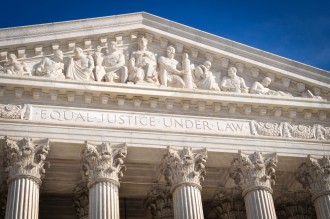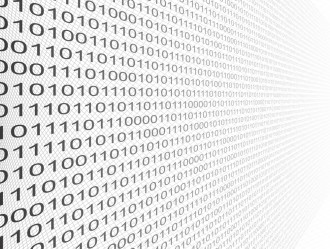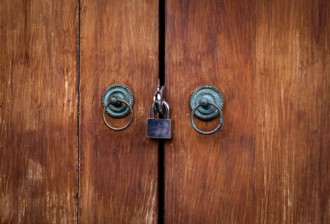
July 5, 2017
Make Patents Great Again (or at least Make them STRONGER)
Senators Coons, Cotton, Durbin, and Hirono have introduced the STRONGER Patents Act of 2017, proposing a large number of improvements to U.S. patent law. While the Bill does a lot to improve patents from an inventor’s perspective, the Bill does leave undone at least a few critical issues:
- The Bill does not fix the abstract idea issue under §101 created by Alice.
- The Bill does not fix the ambiguity in the definition of patentable subject matter under §102 recently brought to light in Helsinn.
- The Bill does not fix the requirement that a successful appellant still must reimburse the USPTO for unsuccessfully defending a rejection in district court, as recently explained in Nantkwest.
As shown in the summary below, what the bill primary does is bring balance to Inter Partes Review and Post Grant Review proceedings.
Sections 102(a)/103(a) Elimination of BRI
Sections 102(a)/103(a) amend 35 USC 316(a)/326(a) to construe claims in an IPR/PGR according to their ordinary and customary meaning, and considering any prior construction by a court. The current application of “broadest reasonable interpretation” makes claims more vulnerable in an IPR/PGR.
Sections 102(b)/103(b) Clear and Convincing Evidence Standard
Sections 102(b)/103(b) amend 35 USC 316(e)/326(e) to require proof of invalidity by clear and convincing evidence. The current burden of proof of “preponderance of evidence” makes claims more vulnerable in an IPR/PGR than in a court where the burden is by clear and convincing evidence.
Sections 102(c)/103(c) Requires Standing to Initiate
Sections 102(c)/103(c) amend 35 USC 311(d)/321(d) to require that a Petitioner have standing, i.e., have been charged with infringement. Currently anyone can bring an IPR/PGR, regardless of whether they have been charged with infringement; this section restricts who can initiate a proceeding.
Sections 102(d)/103(d) One Challenge Per Claim
Sections 102(d)/103(d) amend 35 USC 314(a)/324(a) to add a subsection (2) that bars review of a claim if there has been a previously instituted IPR/PGR on that claim. This allows only one IPR or PGR on each claim. It is not limited to the same petitioner, and is triggered by institution, not a final written decision.
Sections 102(e)/103(e) Interlocutory Appeal of Institution Decisions
Sections 102(e)/103(3) amend 35 USC 314(d)/324(c) and add 314(e)/314(f) allowing certain appeals of institution decisions. New sections 314(e)/324(f) would permit appeals of institution decisions in procedural grounds, but not as to the substantive patent law determination of unpatentability.
Sections 102(f)/103(f) One Challenge Per Patent
Sections 102(f)/103(f) amend 35 USC 315/325 to prevent a petitioner from filing a second IPR/PGR unless the patent owner has charged petitioner with infringement of additional claims. This limitation together with the new limitation in 314(a) of one IPR per claim, restricts multiple IPRs on a single patent.
Sections 102(f) Improved Estoppel in IPR’s
Section 102(f) amends 35 USC 315 to bar a petitioner after an institution decision from raising any 102 or 103 grounds in a court or ITC proceeding, unless based public use, on sale, or otherwise available to the public. This substantially strengthens estoppel, but it still leaves a gap allowing the use of non-documentary prior art that corresponds to documentary prior art. There is no parallel estoppel provision for PGRs.
Sections 102(g)/103(g) Defines Real Party in Interest
Sections 102(g)/103(g) amend 35 USC 315(f)/325(g) to define real party in interest as anyone who directly or indirectly makes a financial contributes to the petition. This expands the definition of real party in interest to anyone who funds the proceedings.
Sections 102(g)/103(g) Provides Discovery of Real Party in Interest
Sections 102(g)/103(g) amend 35 USC 316(a)(5)/326(a)(5) to add subpart (B) providing for discovery about the real parties in interest. It expands discovery relating to real party in interest.
Sections 102(h)/103(h) Bars Institution after Final Court Decision
Sections 102(h)/103(h) amend 35 USC 315/325 by adding new subpart (c)(1) that bars institution of an IPR after final judgment by the ITC or a court as to the validity of the claim under 102 or 103. Once the ITC or a court has ruled on the validity of a claim, no one can challenge the claim in an IPR. However, (c)(1) only bars institution, not maintenance of the IPR/PGR, and (c)(2) only requires termination if a validity determination is affirmed on appeal. A losing litigant might be able to get a second shot at the patent by waiving appeal, and continuing an already instituted IPR.
Sections 102(h)/103(h) Stays Proceedings Pending Court Appeal
Sections 102(h)/103(h) amend 35 USC 315/325 by adding new subpart (c)(2) which requires that the USPTO stay any IPR after the ITC or Court has entered a final judgment, while an appeal is possible or pending. During concurrent IPR and litigation, if the ITC or Court gets to final judgment first, the IPR must be stayed pending appeal.
Sections 102(i)/103(i) Create Expedited Reexamination
Sections 102(i)/103(i) add a new 35 USC 316A/326A with a subpart (a)(3) that gives the patent owner the option to have a reasonable number of substitute claims examined in a new expedited IPR/PGR reexamination.
Sections 102(i)/103(i) Ease Burden of Amending Claims
Sections 102(i)/103(i) add new 35 USC 316A(c)(1)/326A(c)(1) defining amendment practice before the PTAB, and provides that the patent owner need only show that the amendment addresses the unpatentability on an instituted ground, meets the written description requirement, and does not enlarge the scope of the claims. New sections 316A(c)/326A(c) would relieve patent owners of some of the burdens imposed by the PTAB in Idle Free Sys. v. Berstrom, Inc.
Sections 102(i)/103(i) Add Structure to Amendment Process
Sections 102(i)/103(i) add new 35 USC 316A(c)(2)/316A(c)(2) allowing petitioners to present new evidence to respond to amendments proposed by the patent owner, and allowing patent owner an opportunity to respond to new evidence submitted by petitioner.
Sections 102(i)/103(i) add new 35 USC 316A(c)(3)/326A(c)(3) allowing the PTAB to obtain an expedited patentability report. Any party can respond to the report and the ordering of the report constitutes good cause for extending the proceeding beyond one year.
Sections 102(i)/103(i) also add new 35 USC 316A(c)(3) allowing the PTAB to order expedited reexamination on a claim in lieu of making a Final Written Decision on that claim.
Finally, sections 102(i)/103(i) also add new 35 USC 316A(d)/326A(d) allowing the patent owner to move for expedited reexamination in lieu of continuing the proceeding. If granted, the patent owner must replace all of the instituted claims. The petitioner has no right of appeal.
Section 104 Separates Institution and Final Written Decisions
Section 104 amends 35 USC 6 to add subsection (c)(2) to provide that no board member who participates in an institution decision can also participate in hearing the review. This eliminates the potential for confirmation bias, where a Board member who decided to institute also decides whether that institution decision was correct.
Section 105 Eliminates Anonymous Reexaminations
Section 105 amends 35 USC 302(a) to require disclosure of the real party in interest in filing a request for reexamination. This eliminates anonymous reexaminations.
Section 105 Restricts Reexaminations by Defendants
Section 105 amends 35 USC 302 to add a subsection (d) barring reexamination more than a year after the requester is served with a complaint alleging infringement of the patent.
Section 106 Creates Presumption in Favor of Injunctions
Section 106 amends 35 USC 283 to provide a presumption that the patent owner is entitled to an injunction. Gives effect the Constitutional mandate of exclusive rights to authors and inventors.
Section 107 Eliminates Fee Diversion
Section 107 eliminates the diversion of USPTO user fees from the Office.
Section 108 Eliminates Knowledge of Patent from Inducement
Section 108 Amends 35 USC 271 to define inducement in subsection (b) as causing the actions that constitute infringement regardless of knowledge of the patent.
Section 108 Expands Inducement
Section 108 amends 35 USC 271(f) to add subsection (3)(A) to make inducement by the provision of an infringing design an act of infringement.
Section 108 also amends 35 USC 271(f) to add subsection (3)(B) to make inducement by the provision of an infringing specification an act of infringement.
Section 108 also amends 35 USC 271 to add section (j) eliminating the requirement for inducement or contributory infringement that the steps be performed by a single entity.
Section 109 Clarifies that Institutions of Higher Learning are Microentities
Section 109 amends 35 USC 123(d) to clarify that institutions of higher learning and their related patent foundations and other entities are microentities. Nothing is done about their sovereign immunity in challenges to the patent.
Section 110 Expedites Infringement Actions by Small Business
Section 110 Creates a Patent Pilot program for expediting infringement cases involving small businesses.
Section 110 Makes Search Information More Widely Available
Section 110 amends Section 41(i) to require that the USPTO make freely available the patent and trademark information available at its Public Search Facilities.
Sections 201-203 Regulates Rogue and Opaque Letters
Sections 201-203 empower the FTC to take action against the bad faith assertion of patent rights.
Section 204 Preempts State Anti-Troll Laws
Section 204 preempts state laws on patent demand letters, but allows the states to enforce the federal prohibition of rogue and opaque letters.



































